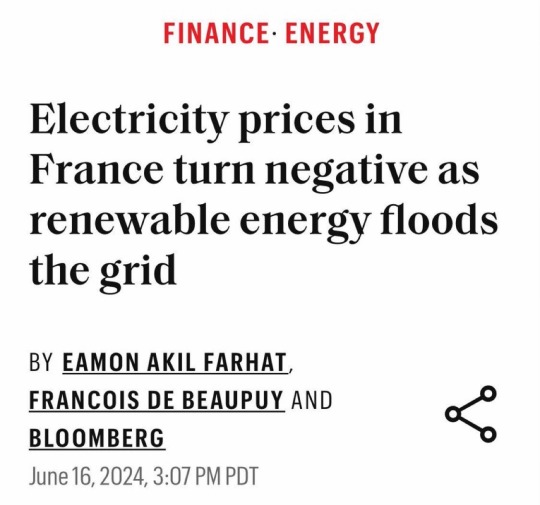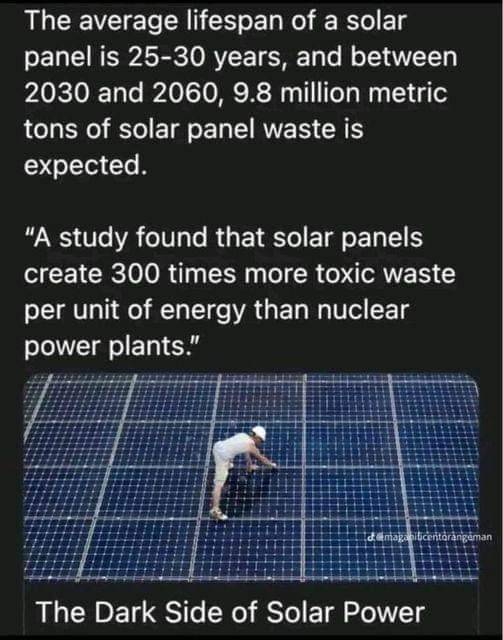#Solar Energy
Explore tagged Tumblr posts
Text
It takes approximately 700,000 megawatt hours of electricity to power Chicago’s more than 400 municipal buildings every year. As of January 1, every single one of them—including 98 fire stations, two international airports, and two of the largest water treatment plants on the planet—is running on renewable energy, thanks largely to Illinois’ newest and largest solar farm.
The move is projected to cut the carbon footprint of the country’s third-largest city by approximately 290,000 metric tons of carbon dioxide each year—the equivalent of taking 62,000 cars off the road, according to the city. Local decarbonization efforts like Chicago’s are taking on increasing significance as President Donald Trump promises to reduce federal support for climate action. With the outgoing Biden administration doubling down on an international pledge to get the U.S. to net zero emissions by 2050, cities, states, and private-sector players across the country will have to pick up the slack. {read}
#article#chicago reader#chicago#climate change#climate action#climate crisis#solar energy#decarbonization#good news
309 notes
·
View notes
Text
"In an unprecedented transformation of China’s arid landscapes, large-scale solar installations are turning barren deserts into unexpected havens of biodiversity, according to groundbreaking research from the Chinese Academy of Sciences. The study reveals that solar farms are not only generating clean energy but also catalyzing remarkable ecological restoration in some of the country’s most inhospitable regions.
The research, examining 40 photovoltaic (PV) plants across northern China’s deserts, found that vegetation cover increased by up to 74% in areas with solar installations, even in locations using only natural restoration measures. This unexpected environmental dividend comes as China cements its position as the global leader in solar energy, having added 106 gigawatts of new installations in 2022 alone.
“Artificial ecological measures in the PV plants can reduce environmental damage and promote the condition of fragile desert ecosystems,” says Dr. Benli Liu, lead researcher from the Chinese Academy of Sciences. “This yields both ecological and economic benefits.”
The economic implications are substantial. “We’re witnessing a paradigm shift in how we view desert solar installations,” says Professor Zhang Wei, environmental economist at Beijing Normal University. “Our cost-benefit analysis shows that while initial ecological construction costs average $1.5 million per square kilometer, the long-term environmental benefits outweigh these investments by a factor of six within just a decade.” ...
“Soil organic carbon content increased by 37.2% in areas under solar panels, and nitrogen levels rose by 24.8%,” reports Dr. Sarah Chen, soil scientist involved in the project. “These improvements are crucial indicators of ecosystem health and sustainability.”
...Climate data from the study sites reveals significant microclimate modifications:
Average wind speeds reduced by 41.3% under panel arrays
Soil moisture retention increased by 32.7%
Ground surface temperature fluctuations decreased by 85%
Dust storm frequency reduced by 52% in solar farm areas...
The scale of China’s desert solar initiative is staggering. As of 2023, the country has installed over 350 gigawatts of solar capacity, with 30% located in desert regions. These installations cover approximately 6,000 square kilometers of desert terrain, an area larger than Delaware.
“The most surprising finding,” notes Dr. Wang Liu of the Desert Research Institute, “is the exponential increase in insect and bird species. We’ve documented a 312% increase in arthropod diversity and identified 27 new bird species nesting within the solar farms between 2020 and 2023.”
Dr. Yimeng Wang, the study’s lead author, emphasizes the broader implications: “This study provides evidence for evaluating the ecological benefit and planning of large-scale PV farms in deserts.”
The solar installations’ positive impact stems from several factors. The panels act as windbreaks, reducing erosion and creating microhabitats with lower evaporation rates. Perhaps most surprisingly, the routine maintenance of these facilities plays a crucial role in the ecosystem’s revival.
“The periodic cleaning of solar panels, occurring 7-8 times annually, creates consistent water drip lines beneath the panels,” explains Wang. “This inadvertent irrigation system promotes vegetation growth and the development of biological soil crusts, essential for soil stability.” ...
Recent economic analysis reveals broader benefits:
Job creation: 4.7 local jobs per megawatt of installed capacity
Tourism potential: 12 desert solar sites now offer educational tours
Agricultural integration: 23% of sites successfully pilot desert agriculture beneath panels
Carbon reduction: 1.2 million tons CO2 equivalent avoided per gigawatt annually
Dr. Maya Patel, visiting researcher from the International Renewable Energy Agency, emphasizes the global implications: “China’s desert solar model could be replicated in similar environments worldwide. The Sahara alone could theoretically host enough solar capacity to meet global electricity demand four times over while potentially greening up to 20% of the desert.”
The Chinese government has responded by implementing policies promoting “solar energy + sand control” and “solar energy + ecological restoration” initiatives. These efforts have shown promising results, with over 92% of PV plants constructed since 2017 incorporating at least one ecological construction mode.
Studies at facilities like the Qinghai Gonghe Photovoltaic Park demonstrate that areas under solar panels score significantly better in environmental assessments compared to surrounding regions, indicating positive effects on local microclimates.
As the world grapples with dual climate and biodiversity crises, China’s desert solar experiment offers a compelling model for sustainable development. The findings suggest that renewable energy infrastructure, when thoughtfully implemented, can serve as a catalyst for environmental regeneration, potentially transforming the world’s deserts from barren wastelands into productive, life-supporting ecosystems.
“This is no longer just about energy production,” concludes Dr. Liu. “We’re witnessing the birth of a new approach to ecosystem rehabilitation that could transform how we think about desert landscapes globally. The next decade will be crucial as we scale these solutions to meet both our climate and biodiversity goals.”"
-via Green Fingers, January 13, 2025
#solar#solar power#solar panel#solar energy#solar farms#china#asia#ecosystem#ecology#ecosystem restoration#renewables#biodiversity#climate change#climate action#good news#hope
2K notes
·
View notes
Text

Source

Source
#environment#France#solar energy#solar#green energy#the left#capitalism#politics#us politics#government#progressive#twitter post#current events#news#green new deal#climate change#renewable energy
3K notes
·
View notes
Text

Solar energy has so many benefits. Raising salaries for teachers is such a needed narrative.
37K notes
·
View notes
Text
World surpasses 40% clean power as renewables see record rise

This is from the Global Electricity Review 2025 by Ember. Although this isn't something you are going to see in newspaper headlines, the progress we made with renewables in 2024 is a pretty big deal and if you're someone who likes a lot of data and graphs it's really worth reading.
I'm going to leave this video here because Hank Green does a better job of covering it than I am going to.
youtube
"This to me feels like news. It feels like a big deal. It feels like things are changing, like we are hitting a moment with electricity generation that really does matter. And over the next five years we will hit the point where we are generating less and less energy with fossil fuels every year. That's great. And that's not news. I didn't see anyone covering this [...]. It's not news because it's not bad and it's also not news because it's not like 'we did it, we hit the moment!'."
I think this quote from Hank's video does a good job of encapsulating how the slow, gradual progress that is happening often doesn't make it into the news--because it's not a dramatic emergency or a "we did it, we fully solved climate change!" kind of moment that makes for good headlines.
But that then gives people the idea that we're hardly making any progress on addressing climate change, which is not true at all. The fact that we need to continue to double-down on this progress to do it more and faster does not negate that so much progress has already been made.
#climate change#global warming#carbon emissions#data#graphs#science#ecoanxiety#ecogrief#climate anxiety#hope#good news#renewable energy#solar energy#wind energy#nuclear energy#hydroelectricity#video#clean energy#green energy#Youtube
3K notes
·
View notes
Text
Dandelion News - February 15-21
Like these weekly compilations? Tip me at $kaybarr1735 or check out my Dandelion Doodles!
1. Solar farms managed for nature boost bird abundance and diversity, new study finds

“There were more than twice as many farmland birds in the well-managed solar farms compared with the intensively farmed land, and nearly 16 times as many woodland birds. […] Overall, diversity was 2.5 times higher, while woodland birds were nine times more diverse.”
2. Washington judge blocks Trump’s gender-affirming care ban, says it's unconstitutional in multiple ways

“This marks the second time in a week that a judge has stood in the way of Trump’s attacks on trans kids. [… The ruling grants] a temporary restraining order that halts enforcement of provisions in Trump’s directive that would cut off federal funding to medical institutions that provide gender-affirming care to minors.”
3. Fog harvesting could provide water for arid cities

“17,000 sq m of mesh could produce enough water to meet the weekly water demand of [… the] urban slums. 110 sq m could meet the annual demand for the irrigation of the city's green spaces. Fog water could be used for soil-free (hydroponic) agriculture, with yields of 33 to 44lb (15 to 20kg) of green vegetables in a month.”
4. Audubon Applauds Bipartisan Federal Effort to Protect Delaware River Basin with Critical Reauthorization Bill

“The bill would […] ensure long-term conservation and restoration efforts, expand the official definition of the basin to include Maryland, and prioritize projects that serve small, rural, and disadvantaged communities. […] The watershed provides important year-round habitats and critical migratory stopovers for approximately 400 bird species[….]”
5. mRNA vaccines show promise in pancreatic cancer in early trial
“Half of the people in the study — eight of the participants — responded to the vaccine, producing T cells that targeted their tumors. […] Just two of the patients who had a response to the vaccine had their cancer return during the three-year follow- up, compared to seven of the eight who did not respond to the vaccine treatments.”
6. Minn. Lt. Gov. Flanagan Makes It Official; She's running for U.S. Senate

“[Flanagan has] “championed kitchen-table issues like raising the minimum wage, paid family and medical leave, and free school meals.” If elected, Flanagan, a tribal citizen of the White Earth Nation, would become the first Native American female U.S. senator in history.”
7. Federal Funding Restored for Low-Income Alabama Utility Assistance After Outcry

“A program meant to help low-income Alabamians pay their utility bills has resumed two weeks after it was canceled due to an executive order from President Donald Trump. […] “We can confirm the funds are reaching those affected by the previous pause[….]””
8. Modeling study suggests Amazon rainforest is more resilient than assumed

“[Previous] studies were either conducted with global climate models that used a simplified representation of convection [or were on a regional scale….] According to the computations, mean annual precipitation in the Amazon does not change significantly even after complete deforestation.“
9. States are moving forward with Buy Clean policies despite Trump reversal

““Buy Clean is a great example of how states and other nonfederal actors can continue to press forward on climate action, regardless of what the federal government does,” said Casey Katims, executive director of the U.S. Climate Alliance, a bipartisan coalition of two dozen governors.”
10. The rewilded golf courses teeming with life

“A wildflower meadow, ponds, scrub habitat, coastline and even an area of peat bog can be found on this little 60-acre (24-hectare) plot, which boasts roe deer, otters, lizards, eels and a huge array of insects and birds.”
February 8-14 news here | (all credit for images and written material can be found at the source linked; I don’t claim credit for anything but curating.)
#hopepunk#good news#nature#us politics#solar power#solar panels#solar energy#birds#biodiversity#gender affirming care#transgender#trans rights#trans healthcare#water conservation#habitat#migratory birds#vaccines#vaccination#mrna vaccine#pancreatic cancer#cancer#native american#alabama#low income#amazon rainforest#rainforest#executive orders#climate action#golf course#habitat restoration
985 notes
·
View notes
Text

3K notes
·
View notes
Text
thanks to @krill-joy for the article!
#sheep#solar farms#good news#environmentalism#usa#solar panels#solar energy#solar power#environment#nature#animals#science#climate change#climate crisis
817 notes
·
View notes
Text




602 notes
·
View notes
Text
Ok so you're looking at the aftermath of Helene and you're thinking "shit, how would I keep my phone charged? What about my neighbors?" and you have some outdoor space and some cash. Your friendly formerly off grid sheep farmer is here to help.
You need this set up right here:
To that you will need to add:
Y connectors:
The 100aH (amp Hour) deep cycle battery of your choice - lead acid AGM will be cheaper, lithium (LiFePo) is more expensive but lasts much longer.
Finally, you need a small pure sine wave inverter like this one: https://a.co/d/70vRd79
Plug the panels into the Y connectors then into the single wire to run to the charge controller. They are now connected in parallel. Take them outside to a sunny spot and face them south and prop them up at about a 45 degree angle. This isn't perfect but it will be good enough.
Connect your battery and charge controller. Connect the panels to the charge controller. All of the places to do this are labeled and all you need is a Phillips screwdriver. I recommend doing it once in a non-disaster situation so you know you can do it but you'll be fine. Boom, you are getting electricity from the sun!
The inverter draws power even when it's not running so don't leave it hooked up when you're not using it. When someone needs to charge their phone, put those alligator clips on the matching color battery posts, turn the inverter on, and plug in the phone/radio. Voilà! A single 100aH battery is not going to run a bunch of things but it will help keep cell phones charged without using up the gas in your car.
The panels are weatherproof but everything else needs to be protected by the way so you'll need to set this up in a shed or garage or in the house. Lead acid batteries can produce hydrogen gas when being charged but just having one isn't a big risk.
FAQ:
Yes, you can permanently mount the panels to your roof if you own your home etc. They're designed for that!
It is true that places sell "solar generators" - those are a charge controller, battery, and an inverter in one box at a very high price point. When a component goes bad you will be unable to replace the component and must replace the entire $1000 box. They are also not upgradeable or expandable, this is.
You do not have to buy Renogy, I recommend them because they kept me in electricity for the years I was off grid.
You do not have to buy the kit, you can buy the components of it as and when you can afford them!
Remember to keep your battery on a trickle charger.
409 notes
·
View notes
Text
Republican Bill in Congress Threatens 300 US Factories, 300,000 American Jobs
Last Updated on: 20th May 2025, 01:19 am
It’s been such a big part of the US Republican Party for so long that it’s hard to keep in mind how insane opposition to clean energy is. Solar and wind energy power millions of homes, and they provide hundreds of thousands of US jobs, and they don’t cause cancer, asthma, dementia, and a large variety of other health problems that coal and natural gas power plants cause. There’s real no good reason to oppose solar and wind energy. Yet, at the national level at least, Republicans have to — because fossil fuel companies pay too many of their bills and they’re not allowed to think for themselves.
Ironically, more and more, wind and solar power plants are being installed in “red states” — states where there are more Republican voters than Democratic voters. This makes it especially awkward and illogical to oppose renewable energy, and doing so can clearly hurt their states, and yet they continue to do so.
Now, the Solar Energy Industries Association (SEIA) shares the following via email: “Legislation passed last week by the U.S. House Ways and Means Committee and advanced through the House Budget Committee could jeopardize nearly 300 American solar and storage factories and lead to the loss of 145,000 gigawatt-hours (GWh) of solar generation by 2030 — more than the annual electricity consumption of Pennsylvania.
152 notes
·
View notes
Text


"To mitigate the negative impacts of climate change, the world needs to quickly transition from fossil fuels to low-carbon energy sources such as solar power.
The chart shows how much this transition has accelerated in the last two decades.
In 2004, it took the world about a year to add one gigawatt of solar power capacity. By 2023, the same amount was added, on average, every single day.
For reference, a gigawatt of solar is enough to power approximately 200,000 homes in the US.
Much of this growth has been driven by China, which by 2023 accounted for about 43% of the cumulative installed capacity worldwide.
A big reason for this acceleration has been a large decrease in the price of solar panels. Since 2001, the price has dropped by about 95%, from $6.21 to $0.31 per watt.
Learn more about why renewables like solar became so cheap so fast."
-via Our World in Data, February 6, 2025
#solar#solar power#china#global#clean energy#renewables#renewable energy#solar panels#green energy#solar energy#good news#hope
1K notes
·
View notes
Text

#solar energy#green energy#bernie sanders#politics#us politics#political#donald trump#news#president trump#elon musk#american politics#jd vance#law#democracy#democrats#money saving#middle class wealth#wealth inequity#wealth redistribution#wealth inequality#wealth#republican#republicans#lawmakers#government#late stage capitalism#political influence#project 2025#melania#don jr
15K notes
·
View notes
Text

361 notes
·
View notes
Text
340 notes
·
View notes